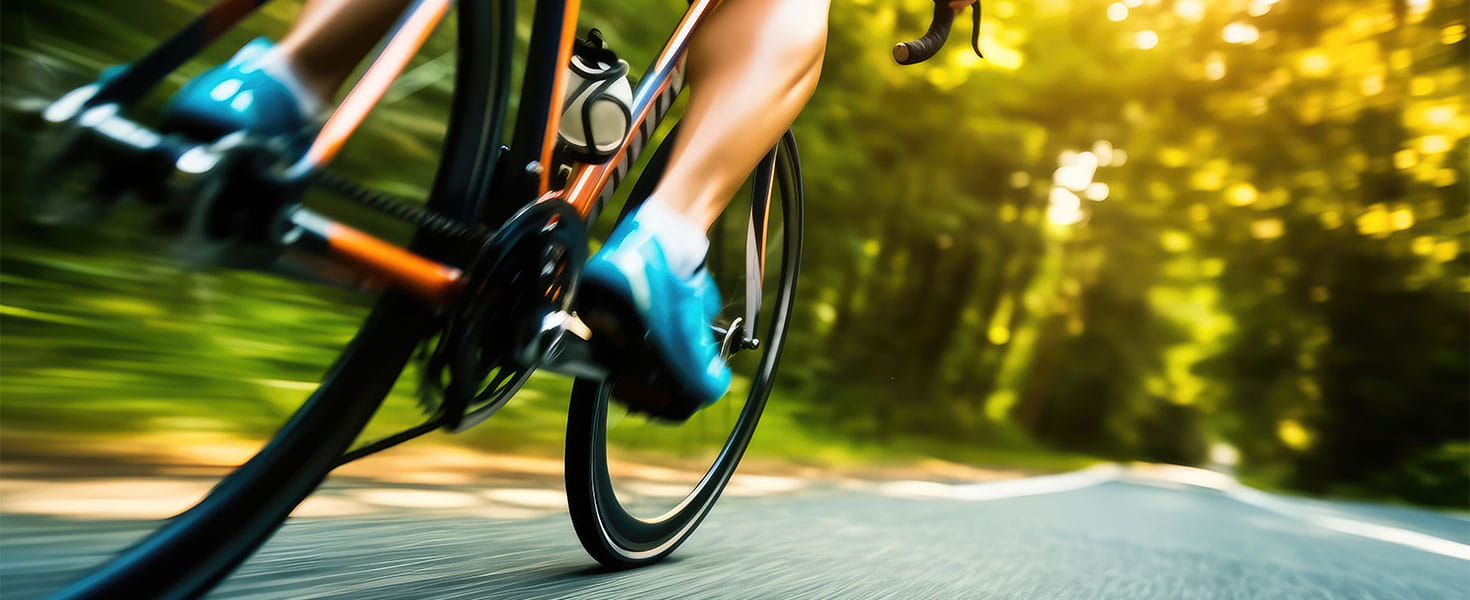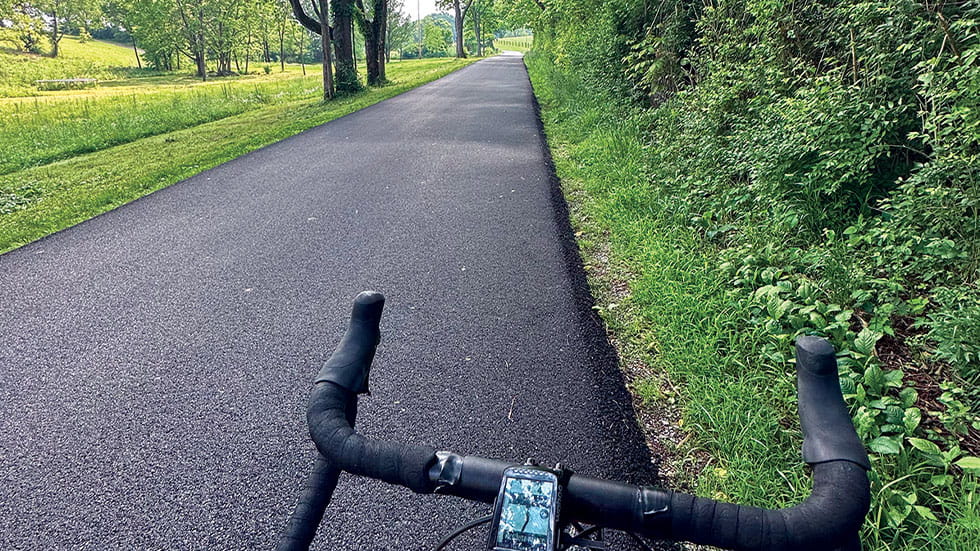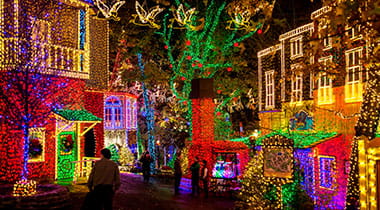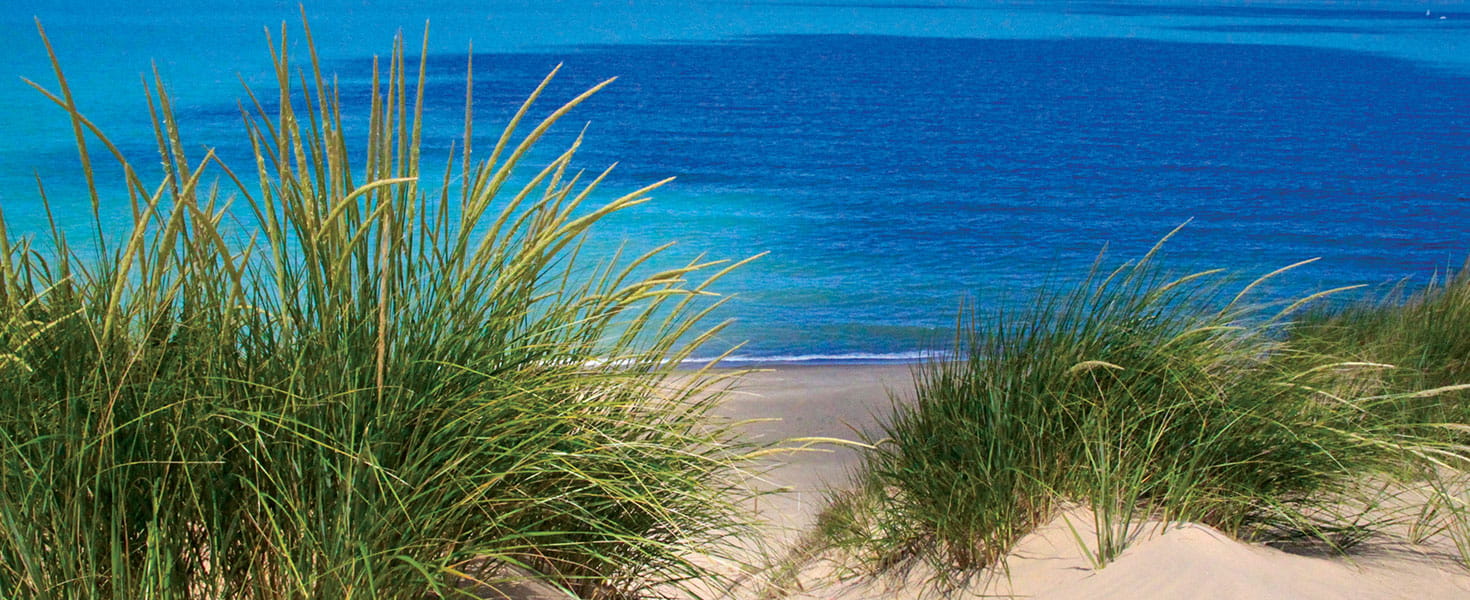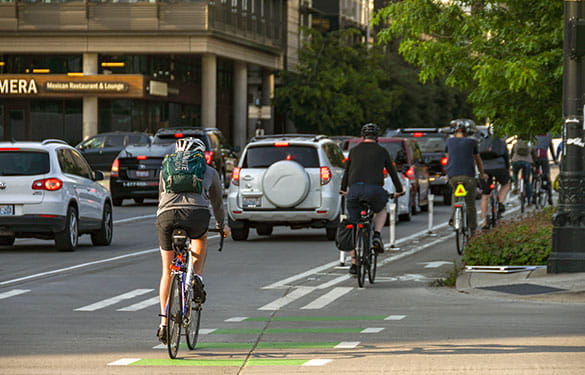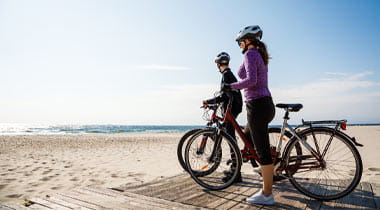Riding on winding country roads lined with gray stone walls, I passed tidy farms and fields filled with horses lazily munching on grass. On this sunny spring afternoon, I was intent on making stops along the way to discover some of the region’s rich history and culture. Indeed, the scenery and history are much of the appeal of cycling on US Bike Route 21, part of the US Bicycle Route System (USBRS), a national network of cycling routes that encompasses more than 19,000 miles of routes across 34 states and the District of Columbia, administered in partnership with the Adventure Cycling Association.

Bike Route 21, running 1,034 miles from Atlanta to Cleveland, is known in the Bluegrass State as the Daniel Boone Bike Route after the frontiersman and folk hero famous for his explorations of Kentucky. It travels through 10 counties, running from the Cumberland Gap in the south 252 miles north to Maysville, where it crosses the Ohio River. The route is marked with green-and-white wayfinding signs.
Since I’m based in Cincinnati, I loaded my Salsa Journeyman road bike on my car and drove east, where I picked up the route on two wheels in Maysville, a scenic downtown on the banks of the river.

My self-guided two-day tour began with a brief climb along a busy road before the route moved into countryside with less car traffic. After a few miles, I rolled into Old Washington, a historic village with brick and wood-frame buildings along a compact main street.
I started at the visitors center, where I watched a 10-minute video with highlights of the town’s history, which includes being part of the nation’s first Federal Census in 1790 and having one of the country’s first postal stations and waterworks west of the Allegheny Mountains. Kentucky frontiersman Simon Kenton set down roots here in 1784. Two years later, the Virginia legislature established the village (before Kentucky was even a state), naming it in honor of George Washington (before he even became US President).
Also in Old Washington is the Marshall Key House (named after its owner, the nephew of US Supreme Court Justice John Marshall). This home is where Harriet Beecher Stowe was staying in 1833 when she witnessed an auction of enslaved people that provided inspiration for Uncle Tom’s Cabin, a best-selling novel that helped to stir antislavery sentiment in the US. Today, the house is the site of the Harriet Beecher Stowe Slavery to Freedom Museum.
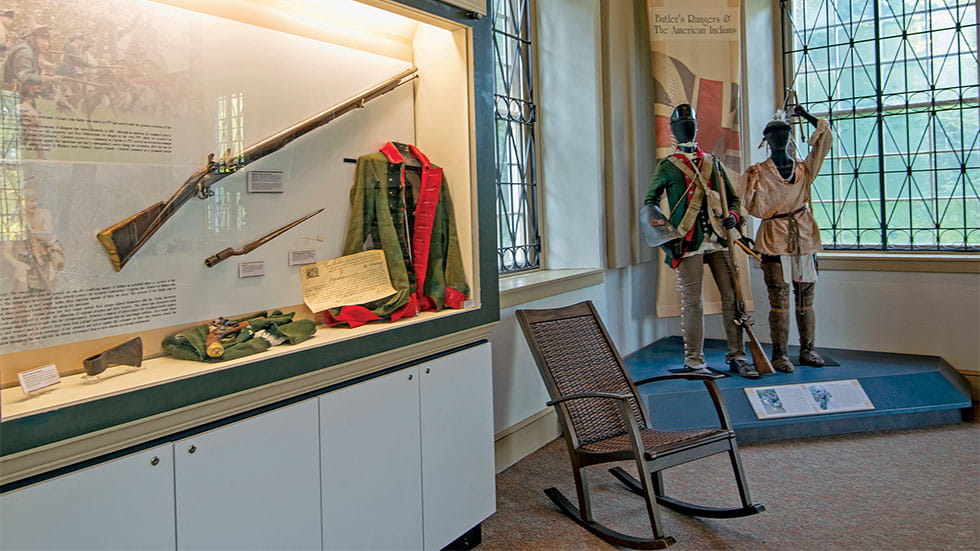
CHASING DANIEL BOONE
Heading back onto the route, I rode south for about 25 miles through rolling hills, bringing me close to Blue Licks Battlefield State Resort Park, the site of one of the last battles in the Revolutionary War and the largest in Kentucky. Lt. Colonel Daniel Boone led a valiant effort here, but his men eventually fell to the British, and his son was killed in battle.
The resort offers lodging and a restaurant, making it a great place to take a break to reflect on this tragic chapter in Boone’s life. The Pioneer Museum in the park was closed for repairs during my ride, but, when open, it has interesting artifacts from the battle, including weapons and replica uniforms from the era.
Then it was on to Daniel Boone’s last cabin in Kentucky, truly his “old Kentucky home.” (He lived in Missouri in his later years.) Visiting the cabin requires deviating from the bike route for about 5 miles on Maysville Road. The cabin is located on the same property as Wendt’s Wildlife Adventure, a family-owned seasonal zoo.
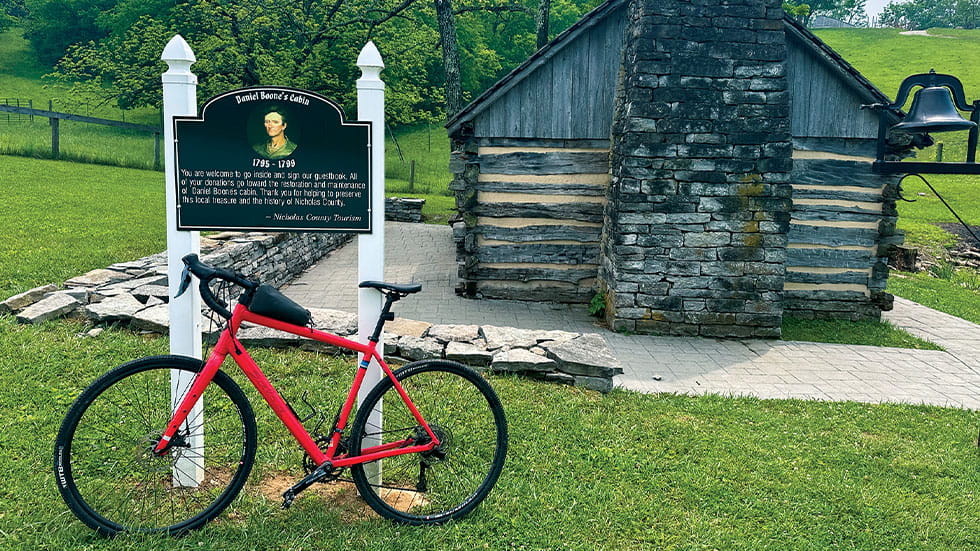
A short ride along a gravel road brought me to the cabin, which Boone built in 1795. Peering inside at the animal pelt on the wall and the open stone hearth, I was able to get a sense of how it looked when Boone lived here. He later sold the property to his daughter and son-in-law, who remarkably raised 11 children in the home.
Continuing my ride, I glimpsed wild yellow poppies that brightened the verdant fields and yet more horses, some of which idly glanced up at me, while others trotted off.
As the trail heads farther south, it picks up the original Daniel Boone Trace, the state’s first road. I would have to save that for another time, though, as I had already covered approximately 60 miles of the northern end of the Daniel Boone route to Lexington.
There’s plenty to experience if you head south from there or tackle the entire route over multiple days, for this trail blazed by Daniel Boone centuries ago now gives cyclists a new way to explore the state and his legend.
TIPS FOR CYCLISTS
Before you set off on the Daniel Boone Bike Route, keep in mind these aspects.
- This is a bicycle route, note a bike path. You’ll be riding on active roads, so stay alert.
- While the route is marked with signs, it’s easy to miss a turn. The Adventure Cycling Association has downloadable route maps that can be sent to your GPS bike computer. Have a paper map as a backup in case you lose signal or battery.
- Bring at least one extra tire tube, an air pump, a multitool and anything else you might need in an emergency. Also, remember that AAA can assist a stranded cyclist, as all AAA membership levels come with bicycle coverage at no extra cost.








